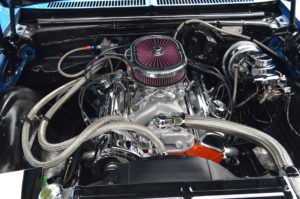Most people are concerned about their cars' heating system in the cold winter months. But did you know that your car's cooling system is actually what keeps your engine from freezing during the winter as well as keeps it from overheating when it's warmer outside? Regulating the temperature of your engine is extremely important in preventing engine damage, which is why it's important to have regular inspections and perform regular maintenance on this important automotive system.
How Does It Work?
Your vehicle's cooling system is made up of a few components, including the coolant, the coolant pump (or water pump), the radiator, a network of radiator hoses, a fan, and a thermostat. Problems with any of these components can lead to issues with the whole system. The thermostat ensures that the temperature of the coolant is kept within a safe range, so that the engine stays within a safe temperature range. If the coolant temperature is low due to freezing temperatures outside, it stays close to the engine until it heats up enough to trigger the thermostat to open.
Coolant mixtures are typically made up of ethylene glycol and water. The combination has a higher boiling point and a lower freezing point than water would have alone.
What Can Go Wrong?
Several different things can go awry with your car's cooling system. Here are a few to watch out for:
 Leaks. If there are small holes in hoses allowing coolant to leak out, the system will be less able to keep the engine temperature stable due to a low fluid level.
Leaks. If there are small holes in hoses allowing coolant to leak out, the system will be less able to keep the engine temperature stable due to a low fluid level.- Malfunctioning thermostat. Problems with the thermostat, such as sticking, will obviously lead to the system reaching inappropriate temperatures, whether too hot or too cold.
- Rust and corrosion. Too much water in the coolant mixture can cause rust buildup on the iron engine components, which can break off. Corrosion due to mineral deposits (if hard water is used in the coolant mixture) can also cause major issues with sediment buildup.
- Aging or bad coolant mixture. Coolant starts to break down and lose its protective properties over time, and isn't as good at cooling engine components. Plus, buildup of sludge and sediment can cause blockages in the system.
How Often Do I Need a Coolant Flush?
To prevent or mitigate damage from these issues, most car manufacturers recommend a coolant flush approximately every 2-3 years, or more frequently with heavy driving. Check the owner's manual to find out what is recommended for your vehicle. Several factors should also be taken into consideration, including engine size, mileage, climate, and current coolant type and age.
You can often tell whether coolant needs to be changed by looking at its color. A color change indicates that it's time for a replacement. Also, because it's so important to keep the appropriate ratio of coolant to water, you can use a hydrometer to check whether it's time for a flush.
If you need a cooling system inspection or if it's time for a coolant flush, head to All in the Wrist Auto to keep your engine running smoothly, winter and summer alike.








